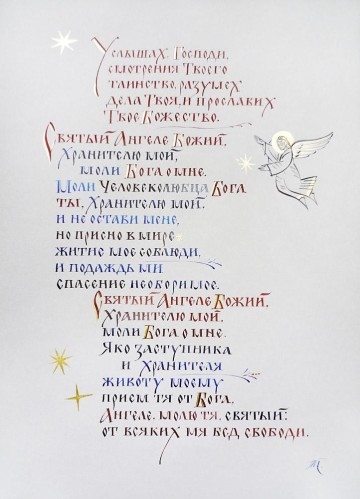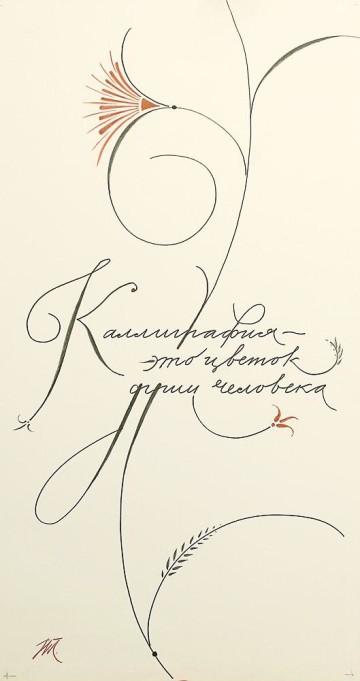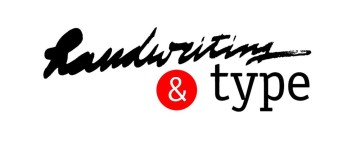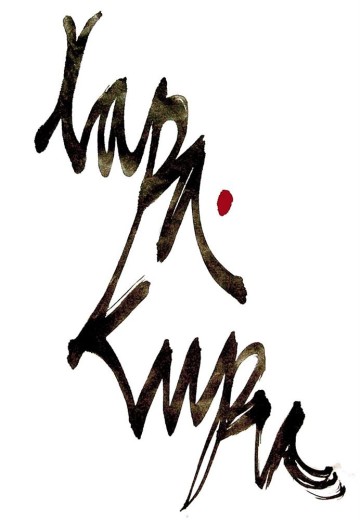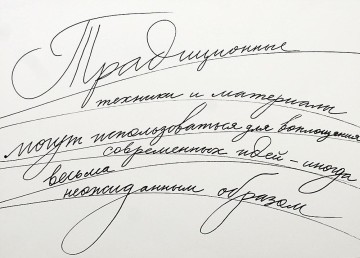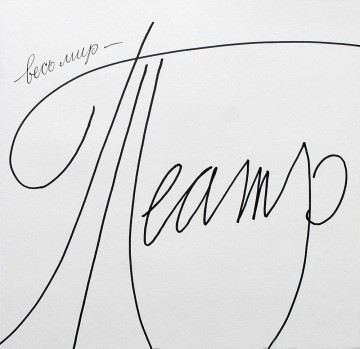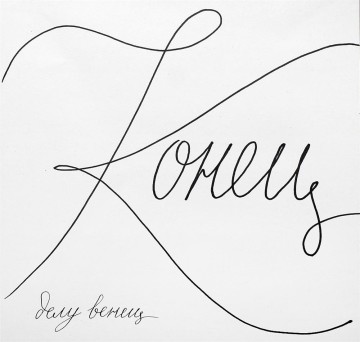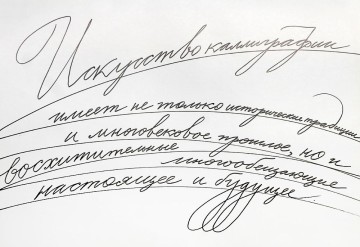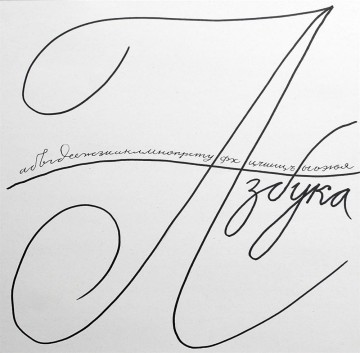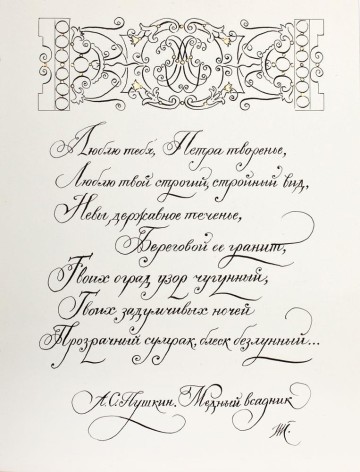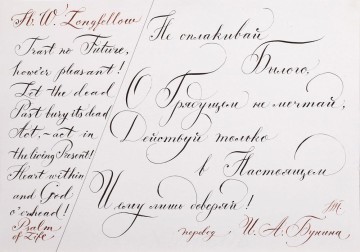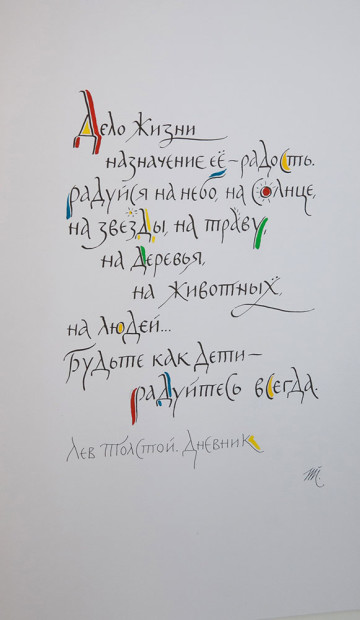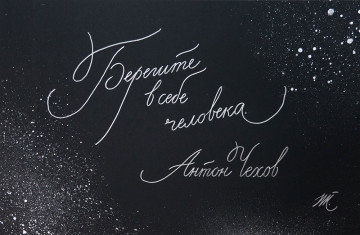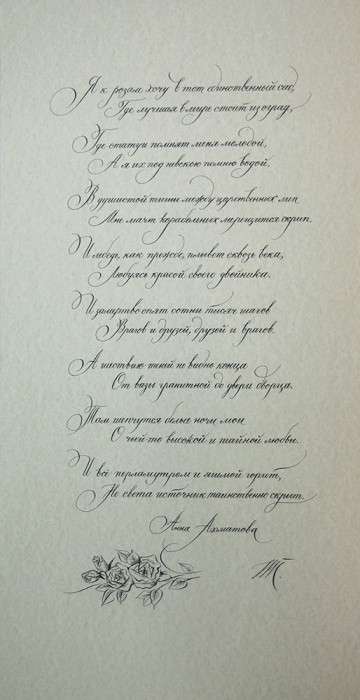Nadezhda Pavlova

Nadezhda Pavlova
St. Petersburg, Russia
Calligrapher, graphic designer, Assistant Professor at the Department of Communicative Design, the Stieglitz Art and Industry Academy in Saint Petersburg; member of the Union of Artists
Calligraphy is the Art for Everyone
Calligraphy is the art available to everyone who, having learnt letters, can read and write, and consequently, it is the most popular art. But this is the theory, but in practice things stand otherwise. Much less hours are allocated to writing lessons in modern school than, say, 50 years ago. The copy-books, in which they used to teach beautiful, correct, functional and fluent writing, stopped being published long ago.
Calligraphy understood as the art of beautiful writing enables a writer to express himself/herself, his/her soul, his/her attitude to life. Rough or smooth paper, sharp or wide fountain pen, and even an ordinary pencil, and a great variety of the cutting-edge tools and materials – that’s what is necessary for self-expression to a calligrapher and, of course, inspiration. There is always room for perfection there.
Calligraphy is an art that may and must bring beauty into the life of everybody who masters a writing tool. Notes, greetings and letters can be transformed into calligraphic work, to give pleasure to relatives and to revive the sometimes dull everyday life.
But in the hands of a professional a graphic calligraphic tool may serve to create a true work of art.
At present, new information technologies enable us to copy and replicate calligraphic forms. A sensor map-board and an electronic fountain pen are an efficient means of information entry into a computer in a digital form. Precise scanners convey all of the details of a manuscript form.
But mastery of the most advanced information technologies will not yield any artistic result without studying historical styles of writing and artistic methods of calligraphy. This knowledge, taken together, combined with correct writing skills, are mandatory for the training of a future graphic designers who should be ideally the carrier and promoter of graphic culture.
Calligraphy is a powerful means of expressiveness, which serves to convey emotions. Calligraphic forms, coupled with the chastity of typesetting, are the means of achieving strong expressive effects as required in modern advertising.
In the advertising booklet and even in the book, hand-made forms near the typesetting on one printed page strengthen each other in a synergic effect.
Today, in the era of computer technologies, a manuscript created by a master of calligraphy can be transformed into an artificial script, without losing the fine details of graphic form. Moreover, each advanced computer user can create an artificial script on the example of his or her handwriting, using an appropriate programme. But, just in the past, in order to write beautifully, one should be willing and industrious, apply patience and assiduity to the inspired writing of each letter.
Author works
Calligraphy is the flower of the human soul
Paper Dibujo Universal, automatic brush, Indian ink, marker, 31.0x57.2 cm, 2009H&T - Handwriting and Type
Mixed media: calligraphy with automatic pen, scanned image combined with computer graphics, printer, 42x16 cm, 2005Hara-kiri
Rice paper SHUSI GAMI 6-ML, Chinese black ink, red ink for felt pen, flat bristle brush (goat), 45x30 cm, 2008Deal of a Lifetime
Paper Bristol, nib Pilot Parallel Pen 1,5 mm, black ink, brush, gouache, 270 x 475 mm, 2017Keep the Human in You
Paper Fabiano Tiziano Nero #31 160g/m2, marker Centropen M2670 SILVER, watercolours, 460 x 300 mm, 2017Calligraphy is a remedy and mental gymnastics.
